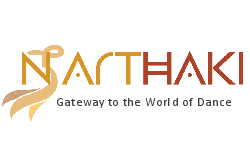
|   |

|   |
Magnificent male dancers at Shivaarghya 2025 - Manjari Sinha e-mail: manjari@sinha.com Photos: Rahul Singh March 4, 2025 The Capital's first-ever Bharatanatyam institute, Ganesa Natyalaya's annual festival of male dancers, 'Shivaarghya' featured young talents from all disciplines of classical dances of India. 'Shivaarghya 2025', a Swarna Saroja event celebrating fifty golden years of Ganesa Natyalaya and the cherished memory of their Founder President Guru Saroja Vaidyanathan, showcased 19 young stars from across the country. The filled-to-capacity Lalitha Kala Mandapam, the cozy auditorium of Ganesa Natyalaya echoed with shrieks of excitement by the enthusiastic young audience on every nuance of the dynamic dancers, on the 23rd of February when Shivaarghya was held from 2 to 8pm with tea and coffee break and Bhojan Prasadam at the end of the long soiree. Dr Karan Singh, the chief guest of the evening, invoked Nataraja, the God of dance, with the Sanskrit shloka: 'Nrittaavasane Nataraja rajo, Nanaad dhakka navapanch vaaram / Uddhartu kaamah sanakaadi siddhan etad vimarshe Shiva sutra jalam'. and stated that Shiva was the 'Adi Narthak', the first ever male dancer. Watching Vinay Tiwari perform the popular Tanjore Quartet varnam "Mohamaana" in Bhairavi ragam and rupaka talam, where the Nayika is intoxicated in love with Shiva, he said, "I don't know Tamil but I know dance!" Admiring the dancers, he hailed Guru Saroja Vaidyanathan, who had trained hundreds of male and female dancers in his favourite dance form, Bharatanatyam. He was happy to see the legacy being nurtured and carried forward by Rama, her worthy disciple and daughter-in-law. He also praised and blessed Nilava Sen, a brilliant disciple of Rama Vaidyanathan from Kolkata. 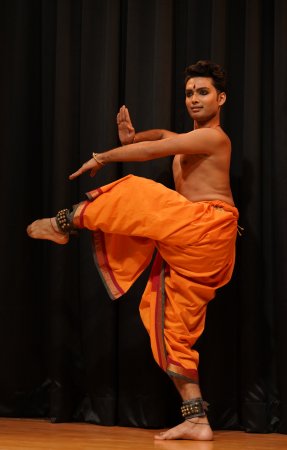 Nilava Sen The sprightly, slender Nilava Sen opened his fascinating dance with 'Shambhu Natanam', an invocatory Stotra for Shiva, written by sage Patanjali, and captivated the audience with Shiva's divine dance. Composed in raga Laatanta Priya set to khanda chapu talam, this invocation, "Om Namah Shivaya" saw Nilava transforming the adjectives of Shiva such as Shashi-Shekharaya, Nila Kanthaya, Bhakta Vatsalaya, Om Rudraya, Shula Panaye Namah et al into visual poetry. Covering the whole space with his light-footed vibrant energy, he would finally freeze into sculpturesque poses. His dance was a unique combination of dynamic dance and aesthetic delicacy. His abhinaya piece was based on the famous composition of Gopala Krishna Bharathi, "Eppo Varuvaaro" in raag Jaunpuri, where the devotee asks the Lord of Chidambaram when he would come to relieve him from his agonies. It was overwhelming to watch his Guru Rama Vaidyanathan watching Nilava's moving abhinaya, his pleading and outpouring of emotions that got her eyes welled up with tears of joy. Both the pieces presented by Nilava were choreographed by Rama Vaidyanathan. 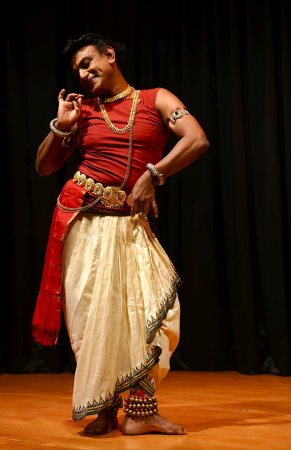 Dr S. Vasudevan The evening took a spiritually elevating start with 'Rasaarnava: the unbound experience of energy' presented by Dr S. Vasudevan. An accomplished dancer and musician, Sridhar Vasudevan is trained in Bharatanatyam under Guru Vyjayanthimala Bali, in Kathakali under Guru Sadanam Balakrishnan, and Chhau under Guru Shashadhar Acharya. His Doctoral Degree in Carnatic music from Delhi University is under Dr Radha Venkatachalam. His philosophical research continues under Kamalini Dutt, evident in the content of his presentation this evening. The theme of Rasarnava and its involved execution augmented with appropriate text and music, was not just conceived by Vasudevan but was also composed and sung, choreographed and performed by him. The credit for sound design goes to Prashant Chaudhury. He explained the concept - "In the slumber of Timelessness rests this vital coil of limitless energy. This is the source of every cosmic happening. The coiled energy Kundalini wakes up from her cave of mysteries for the cycle of quest, creation and evolution. It manifests itself from raw energy to form. Rising from the 'Mulaadhara' to 'Sahasrara' she meets the absolute, the auspicious Para-Shiva. He is the Rasa, the relish of sublime bliss, and she augments the 'Aanand' of that sublime bliss - 'Raso vai sah / Rasa aanand vardhini'. Vasudevan is a first-rate dancer and he chose this theme to celebrate the seed of creation itself. He sourced verses from Rudra Yamala, Vijnan Bhairava Tantra and Saundarya Lahari. The Dhrupad composition of Nayak Baiju Bawra revealed the simultaneous journey of sound to its musical ecstasy, through the journey of Kundalini from Muladhara to Sahasrara, "Jivanmukti ko (naad) roop sadhe". The Laya or rhythm emerges from Shiva's damroo "Taalvat naad / Chakramadhye sphuranti / Kreedayanti sur sundari!" The music and dance were made for each other, and they merged beautifully well in Vasudevan's immaculate presentation.  Akash Dwivedi Kathak recital by Akash Dwivedi, trained under Pt. Jai Kishan Maharaj came next. Lucky to have received guidance from Pt. Birju Maharaj and Guru Kumudini Lakhia as well, Akash seemed a bit different from the usual 'Bhed Chaal' of the Kathak performances seen in Delhi. He opened with a Dhrupad composition "Damaroo hara kara baje" in raga Gunakali set to rupak tala of seven beats cycle and used the swaras of the composition for lehera, the musical refrain for the nritta passages. He switched over to Teentala to showcase the beauty of Lucknow Gharana opening with Ganesh and Krishna Kavittas. The Tode, Tukde, and Parans were followed by Gat Nikas and 'Thunga Thunga', concluding with Tatkar, the footwork with 'Ladi' of 'Takit Takit Dhin' and the Doha in praise of the Guru, "Guru Govind dou khade". 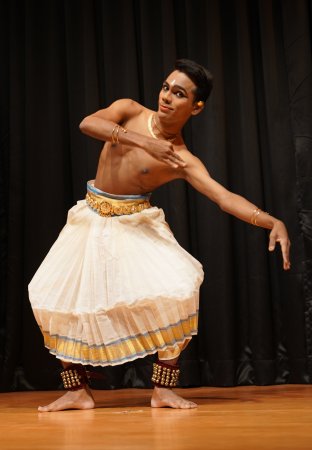 Ajeesh Menon Mohiniyattam by Ajeesh Menon from Kerala was another impressive performance. Ajeesh is also a Carnatic musician. A brilliant disciple of Dr. Methil Devika and Vasantha Aravindan for Mohiniyattam, Ajeesh is also pursuing abhinaya lessons under Dr. Anupama Kylash from Hyderabad. His toned, slim body and restrained movements impressed from the very beginning when Ajeesh opened his recital with a Ganapathi Vandana followed by Cholkettu, which was a musical composition of Suryanarayanan in raga Anandabhairavi set to adi talam. The choreographer Dr. Methil Devika had interspersed the technique of Mohiniyattam with the first shloka of Saundarya Lahari, which explored how everything that moves in this world is due to the grace of Devi and her very presence. The poet says, "Nothing moves without her presence. All the Gods pray to her. To that Goddess, my salutations". The second piece 'Kottichettham' was an excerpt from the Tamil epic Silappadikaaram. Kottichettham was danced by the Chaakkyan or Saakkyan in front of the Chera king and queen. The king who had just emerged victorious and the whole visual of the king standing next to the queen prompted the Chaakyan to dance Kottichettham. The one presented by Ajeesh was on Ardhanarishwara, the dance of Lord Shiva with Goddess Uma as his other half. While Shiva's blazing eyes show us a thousand images and his matted locks are tossed around in all directions, the divine feminine Uma within him is more complacent. Her anklets and ornaments do not move and her breasts do not heave. This composition had a lot many contradictory attributes for the concept of Ardhanarishwara, and it also talked about the twirl of energies between the divine masculine and the divine feminine, not just between two people but within oneself. This choreography of Methil Devika was based on the musical composition by the Late Kavalam Narayana Panicker in Todi ragam, set to champa talam of 10 beat cycle. 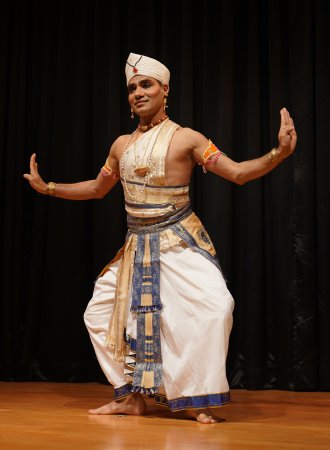 Dr. Bhabananda Barbayan Sattriya by Dr. Bhabananda Barbayan from Guwahati brought the devotional fervour from the Sattras of Assam, established by Shrimanta Sankaradeva in the fifteenth century. Dr. Bhabananda Barbayan took training in drama and music under the guidance of Guru Paramananda Barbayan and nritya under Tuniram Barbayan. Cheniram Barbayan trained him in Bayan, Kamal Bargayan in Gayan and Baluram Bargayan Oja guided him in studying the manuscripts and acting. Thus being an all-rounder, he received Sangeet Natak Akademi's Ustad Bismillah Khan Yuva Puraskar in 2012. Bhabananda opened with Isha Vandana, "Megha Shyam murtimana mahabahu...", which described the beautiful attributes of Lord Krishna such as, he is dark as clouds, he is beauty personified, he has long arms etc. His concluding piece was Dasavatara. Bhabananda used the Ojapali composition here for the abhinaya technique of Sattriya dance to portray the ten incarnations of Vishnu. He even used the vachika abhinaya for the dramatic effect. This sounded a little different from the Dasavatara by Jayadeva we often see in other dance styles. 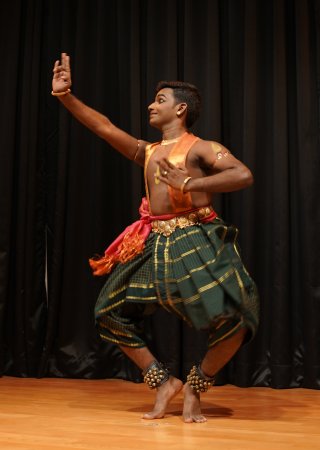 Bharat Gangadhar Devanpalli Bharat Gangadhar Devanpalli, a Bharatanatyam dancer from Mumbai, is the disciple of Anand Satchidanandan and Jayalakshmi Anand at Anandalahari. He presented two pieces, the Hamsanandi Jathiswaram set to rupaka talam and the famous Abhang of Sant Tukaram, "Sundara te dhyana', passionately describing the beauty of Vitthala. Here, the dancer explored the unconditional and boundless love that both Sudhama and Saint Tukaram share for Lord Krishna, drawing parallels between their devotion. Both the nritta and abhinaya pieces were choreographed by his acharyas. 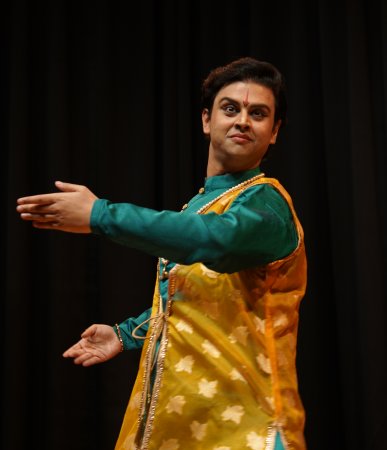 Tribhuwan Maharaj Tribhuwan Maharaj, the charming young son and disciple of Pt. Jaikishan Maharaj and grandson of maestro Pt. Birju Maharaj, represents the ninth generation of the illustrious Kalka Bindadin Gharana of Lucknow. Opening his performance with Omkaar Stuti, "Omkar bindu sanjatam", he offered an ode to Shiva, the Aadi Deva, with a traditional Dhrupad in raga Shankara, set to chutala, "Mahadeva Shiva Shankara", praising Shiva's divine appearance and his cosmic dance. For the nritta segment, unlike the usual Teentala, Tribhuwan chose tala Basant of a nine-beat time cycle with Lehera (the musical refrain) also in raga Basant to offer the choicest Tode, Tukde, Paran, Chakradaar Tihais et al, ending with a Tarana in the same raga. His concluding surprise was his Tatkar, the crisp footwork in Dhamar, a challenging tala of 14 Matras. 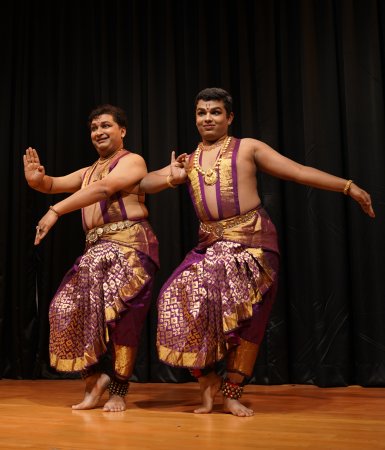 Binesh Mahadevan and Poojith Menon Bharatanatyam by Binesh Mahadevan and Poojith Menon, the father-son duo from Chennai, came to break the ennui of solo performances till now. Alumni of Sri Saraswati Gana Nilayam, Binesh initially trained under Guru K Lalitha, the Guru of Dr. Saroja Vaidyanathan. He continued learning under Ranganayaki Jayaraman, a student of K Lalitha. Binesh is currently secretary of ABHAI and an active member of Prayathnam. Poojith B Menon gelled well in duets with his Guru/father. Their dance theme was 'Lalitha Vandanam', in which all the compositions presented were created by K. Lalitha, his grand Guru and founder of Saraswathi Gana Nilayam. Pushpanjali was presented as a duet in ragam Gambeeranattai and adi talam as 'Nritta Vandhanam'. 'Ambal Sthuthi' in Kedaragowlai ragam and adi talam came as a varnam like solo by Binesh Mahadevan before they concluded with the 'Dasavatharam' in Ragamalika and adi talam. 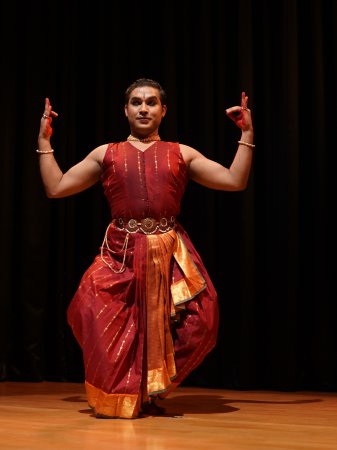 Vinay Tiwari Vinay Tiwari from Salempur, Bihar, the talented disciple of Saroja Vaidyanathan and Rama Vaidyanathan presented the popular varnam of Tanjore Quartet in Bhairavi ragam and rupaka talam, "Mohamaana" where the Nayika madly in love with Lord Shiva pleads with him not to be indifferent towards her because Manmatha is striking her with arrows of passion. The beautiful choreography of Rama Vaidyanathan performed excellently by Vinay, was interrupted time and again due to some technical hitch. Rama wisely used the gap to felicitate Dr. Karan Singh and requested him to bless the potential stars of tomorrow. 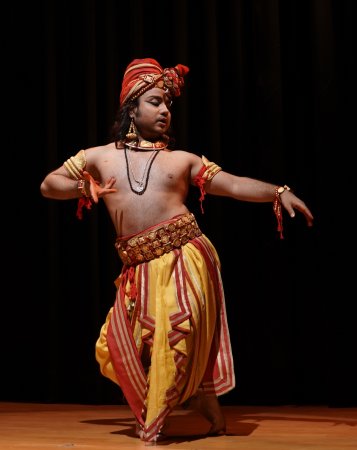 Akash Mallick Marga Natya was a novel dance form presented by Akash Mallick. Akash is a disciple of Kalamandalam Piyal Bhattacharya, who reconstructed Marga Natya, a performance system rooted in the research and reconstruction of Bharata's Natyashastra. It focuses on nritta (pure dance), geet (music), and abhinaya (expression) as prescribed by Bharata Muni, combining traditional practices with creative exploration. Beyond entertainment, Marga Natya aims to serve as a path for self-realization, embodying the philosophical and spiritual essence of the Natyashastra. Akash Mallick presented the Sadaji Kapala Geeti, one of the Sapta Kapala Geetis mentioned in Natyashastra. His second performance was Panika Vidhi, which was like Asarita Vardhamana Vidhi, described in Natyashastra. However, the prescribed literature for it is found only in Bharatabhashya by Nanyadeva. Adopting the literature and notation from Bharatabhashya in alliance with the tala pattern from Sangita Ratnakara, Piyal reconstructed the Pashupati Panika presented here. It had four segments - Mukha, Pratimukha, Sharira and Samharana. It was composed in Choksho Shaadava Graama raga, with the application of Shuddha Nishad in ascension 'Aaroha' and Komala Nishad in descension 'Avaroha'. This sounded quite like Bageshri of the present day Hindustani music. Rest followed the Shadja Graama pattern. 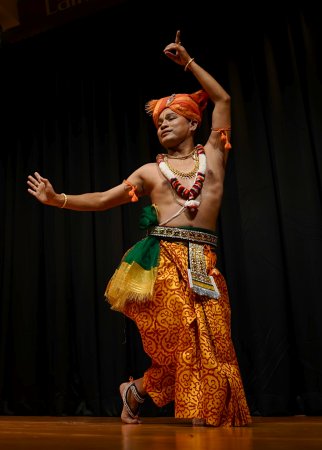 Dr Sinam Basu Singh Manipuri dance by Dr Sinam Basu Singh from Imphal was a sheer delight. A top-grade artist of Prasar Bharati and the first male dancer to receive SNA's Bismillah Khan Yuva Puraskar for Manipuri dance, Sinam is the grandson of maestro Meitei Pung player the Late Guru Sinam Bokul Singh and disciple of Guru N. Tiken Singh and W. Lokendrajit Singh. He has also trained under Guru Hemanta Kumar and Guru N. Amusana Devi. A sought-after solo dancer and choreographer, his lec-dems are equally popular. Sinam Basu opened his solo presentation with 'Kamadeva Nartan'. The authentic music with traditional Manipuri musical instruments like the Pena and Pung, Vanshi, and the tune of Padavali Sankeertan and the high-pitched female voices provided authentic flavour to his Manipuri dance presentation. Basu personified the besotting beauty of Kamadeva in his colourful silken attire and the Pushpa Vaan of Kamadeva with its floral 'Pratyancha' and danced with finesse. The other item presented by him was 'Ardhanarishwara'. He beautifully depicted the male and female energies of Shiva and Devi Parvati in one body. His Meitei poetry felt like a parallel transliteration of Shankaracharya's 'Ardhanarishwara Stotram' ending with "Om Ardhanarishwaraya namah". 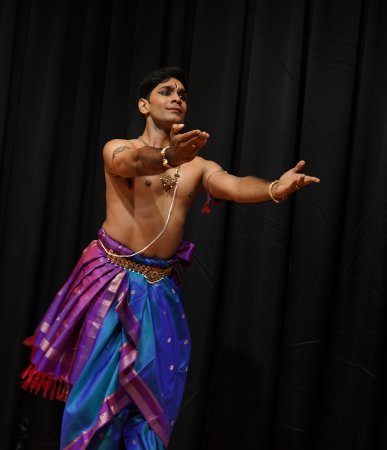 Vidhun Kumar Vidhun Kumar, a brilliant Bharatanatyam dancer from Trivandrum is an IT professional. He is trained under guru Priyadarsini Govind and V Mydhili. Opening with a traditional Ganesha Mallari studded with jathis alternating with sahityam invoking Ganesha, Vidhun presented "Adum Chidambaram" on Nataraja's cosmic dance, choreographed by V. Mydhili. The next piece was 'Ninda Stuthi', a choreography of Priyadarsini Govind depicting celestial conflicts in Shiva's family with tongue-in-cheek dialogues expressively emoted by the dancer. Vidhun has mastered his Bharatanatyam technique so well that he goes beyond it to express his emotional approach to the abhinaya. 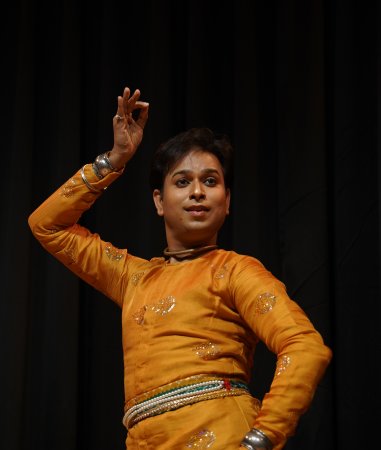 Vishavdeep Sharma Vishavdeep Sharma, a sensitive Kathak dancer, presented 'Chaturang' in Yaman, and condensed the nritta and abhinaya aspects of Kathak in just one piece with extraordinary command of both. A brilliant disciple of Prerana Shrimali, opening with Krishna Vandana and Kavitta, Vishavdeep seemed to have internalized the dancing nuances and the intellectual approach of his Guru thoroughly. One was impressed with his elan and effortless ease with which he performed the Thaat, Aamad, and Tode Tukde, Paran, Gat Nikas, and Gat Bhava with "Shyam aisi bajai muraliya" et al interspersed within the four parts of the Chaturang. In his abhinaya piece 'Ravan', Vishavdeep explored the dual personality of the notorious character. On one hand, he was a great Yogi, a Tapasvi, a Shiva Bhakta, a musician, a veena player, a very learned and knowledgeable man and on the other hand he kidnapped Sita, murdered Jatayu, waged war with Lord Rama and is the villain of the Ramayana. Appropriate music and sound effects augmented Vishavdeep's subtle abhinaya. 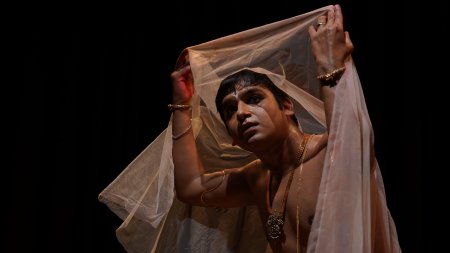 Dr. Himanshu Srivastava Bharatanatyam by Dr. Himanshu Srivastava was another impressive performance. A well-known dancer, research scholar and painter, Himanshu is trained under reputed Gurus like Dr. Saroja Vaidyanathan, Kamalini Nagarajan Dutt and Rama Vaidyanathan. Opening with "Samba Sadashiva Shambho Mahadeva" as an ode to Shiva, he proceeded towards his main presentation 'The Abandoned Gopi'. Drawing inspiration from the legend of Gopishwar Mahadev from Brindavan, this explored the true essence of being a Gopi. In the romantic background of the swaras in Pilu / Kapi, the Gopi is searching for Krishna in the Anand Nikunj of Brindavan, "Krishna etadrishah kutah?" 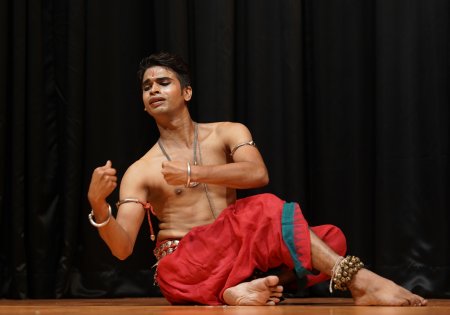 Sanjeev Kumar Jena Sanjeev Kumar Jena, an Odissi dancer from Bhubaneswar, is a disciple of Guru Bichitrananda Swain. He is known for his expressive storytelling and dynamic stage presence. His opening piece was Pallavi in raga Ananda Bharavi. Establishing his credentials in the nritta aspect of Odissi, he proceeded to the second piece for abhinaya. This was 'Shurpanakha', a powerful portrayal of the fierce and complex emotions of Ravana's sister, that delved deep into her journey from desire to humiliation and vengeance. Sanjeev brought her story to life through the graceful yet intense language of Odissi. 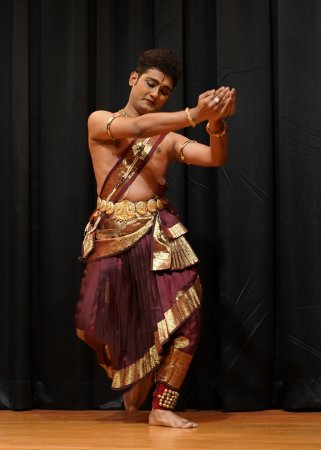 Venkat Deekshitulu Venkat Deekshitulu is a Kuchipudi dancer from Hyderabad. Son of Lakshmi Shankar, the founder of Nruthya Deekshalaya, Venkat is a rising Kuchipudi artiste. He trained under his mother and Chavali Bala Tripura Sundari. He opened with "Jatadhara Shankara Deva Deva", a Todi raga Kriti of Oothukadu Venkata Subbaiyer's Saptaratna. Celebrating Shiva's Ananda Tandavam and his divine glory, he danced to the rhythmic jathis presenting a vivid sanchari depicting Gangavatharanam, the descent of Ganga. 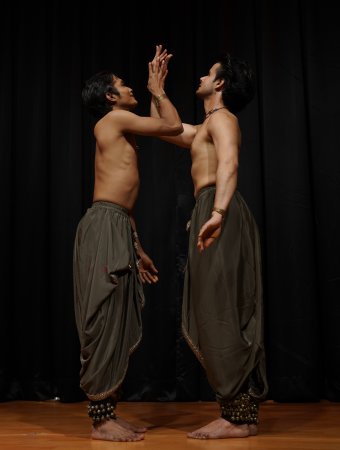 Pritam Das and Gaurav Bhatti Shivaarghya concluded with a scintillating Kathak - Bharatanatyam Jugalbandi between Kathak dancer Gaurav Bhatti from Vancouver, Canada and Bharatanatyam dancer Pritam Das from Delhi. Pritam had his initial training under Jayita Ghosh and Samrat Dutta and now he is under the advanced tutelage of Rama Vaidyanathan. Gaurav Bhatti, a Canadian dancer-choreographer, trained in Kathak under gurus Saveeta Sharma from Ottawa and Lata Bakalkar from Mumbai. He also learned under the guidance of Aditi Mangaldas in Delhi. In 2021, for his work Hemant, he received the inaugural Dr. Sunil Kothari Award for Emerging Artists instituted by Aditi Mangaldas and her Drishtikon Foundation. Pritam and Gaurav presented 'Sam', a duet that brought together the worlds of both the dance forms in a conceptual exploration. 'Sam' delved into the flow of the three Nadis - the Ida, Pingala, and Sushumna - that govern our being. The Ida Nadi, representing the intuitive feminine Shakti converges with the Pingala Nadi, representing the logical masculine Shiva, each guiding the dancer in unique ways. Through their union, the Sushumna Nadi emerges as the central channel of balance, embodying the union of the Ardhanaree Murti. 'Sam' navigated this interplay, using the practice of Vairagya to transcend duality, flowing like water - pure, fluid, and limitless. Rhythmic compositions for Sam were created by Ashish Gangani and music was composed by Rohit Saini and Vidit Singh Chauhan. Vocals by Vidit Singh Chauhan, konnakol by Sayani Chakraborty, pakhawaj by Ashish Gangani and sitar by Salim Khan, enhanced the dance. Shivaarghya 2025 was a beautiful bouquet of talented dancers, that kept the audience glued to their seats throughout the program. Kudos to Rama Vaidyanathan for organizing this festival with such finesse, right from the selection of such excellent male dancers from so many dance disciplines to the quick succession of dance presentations, the admirable announcements with precise details by her versatile daughter and disciple Dakshina Vaidyanathan and of course for the delicious Prasadam! 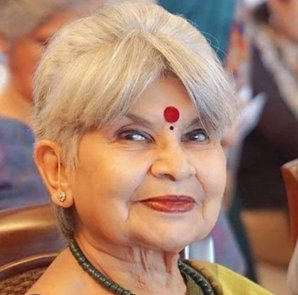 Manjari Sinha is a musicologist and an acclaimed classical music and dance critic. She has an MA in Sanskrit from Allahabad University, MA in Music from Vikram University, Ujjain; Sangeet Prabhakar in Hindustani Vocal, Tabla, Sitar and Kathak dance from Prayag Sangeet Samiti, Allahabad; and further training in Sitar under Guru Pt. Arvind Parikh in the lineage of Ustad Vilayat Khan. She has authored a book on Ustad Bade Ghulam Ali Khan, commissioned & published by Roli Books. She has contributed the chapter on Kathak for 'Indian Dance: the Ultimate Metaphor'. Her articles in English and Hindi on Music, Dance, Art & Culture are regularly showcased in a variety of leading journals and periodicals. |